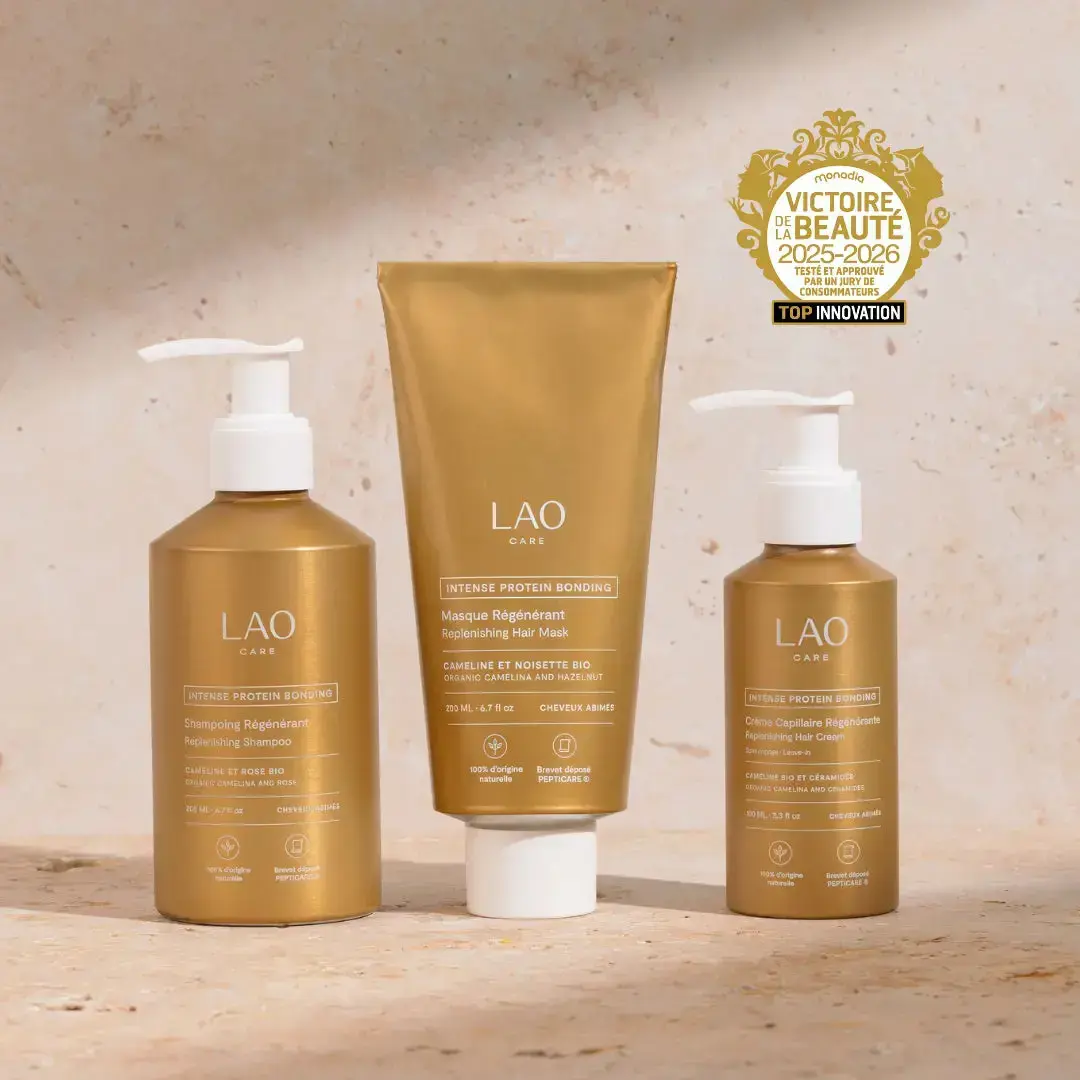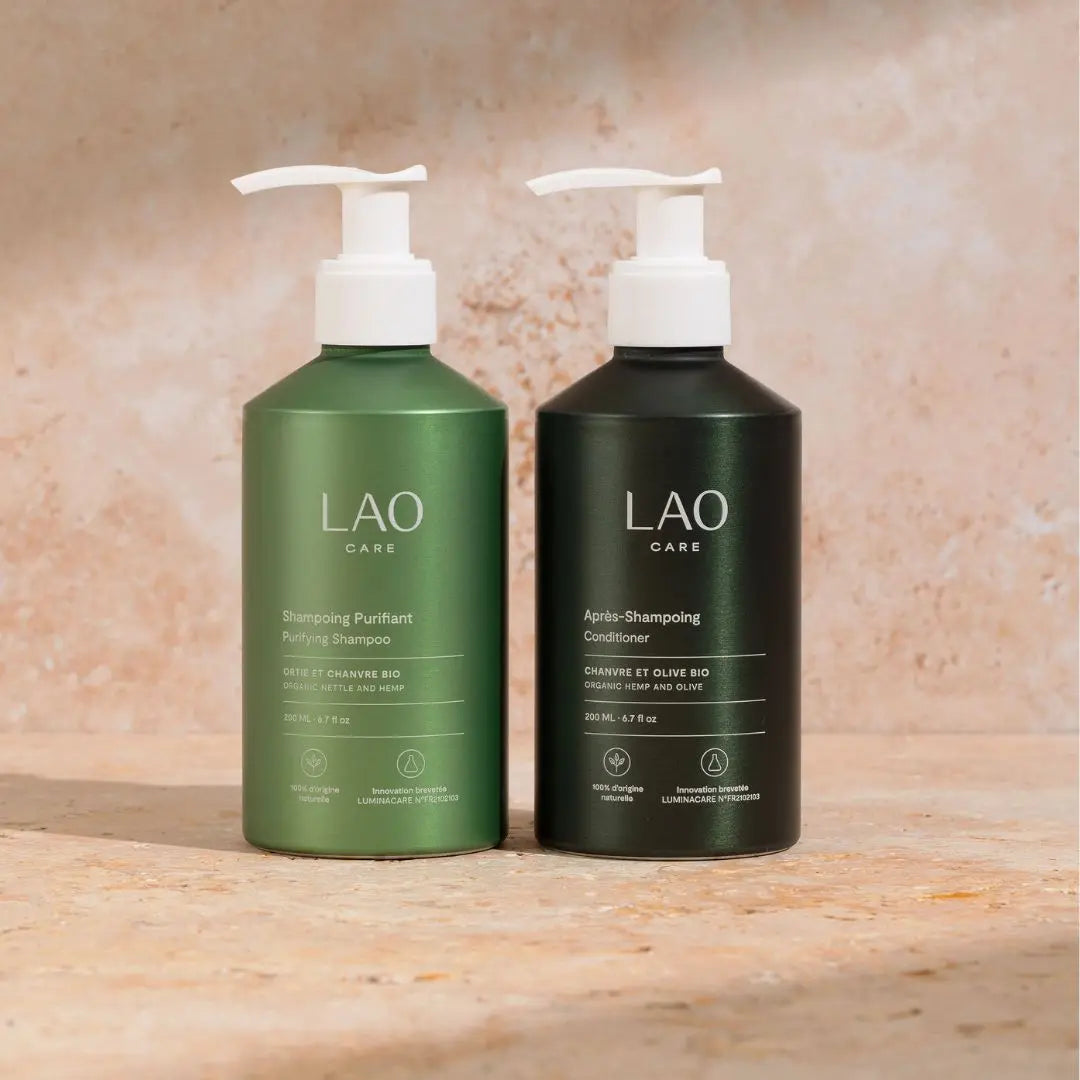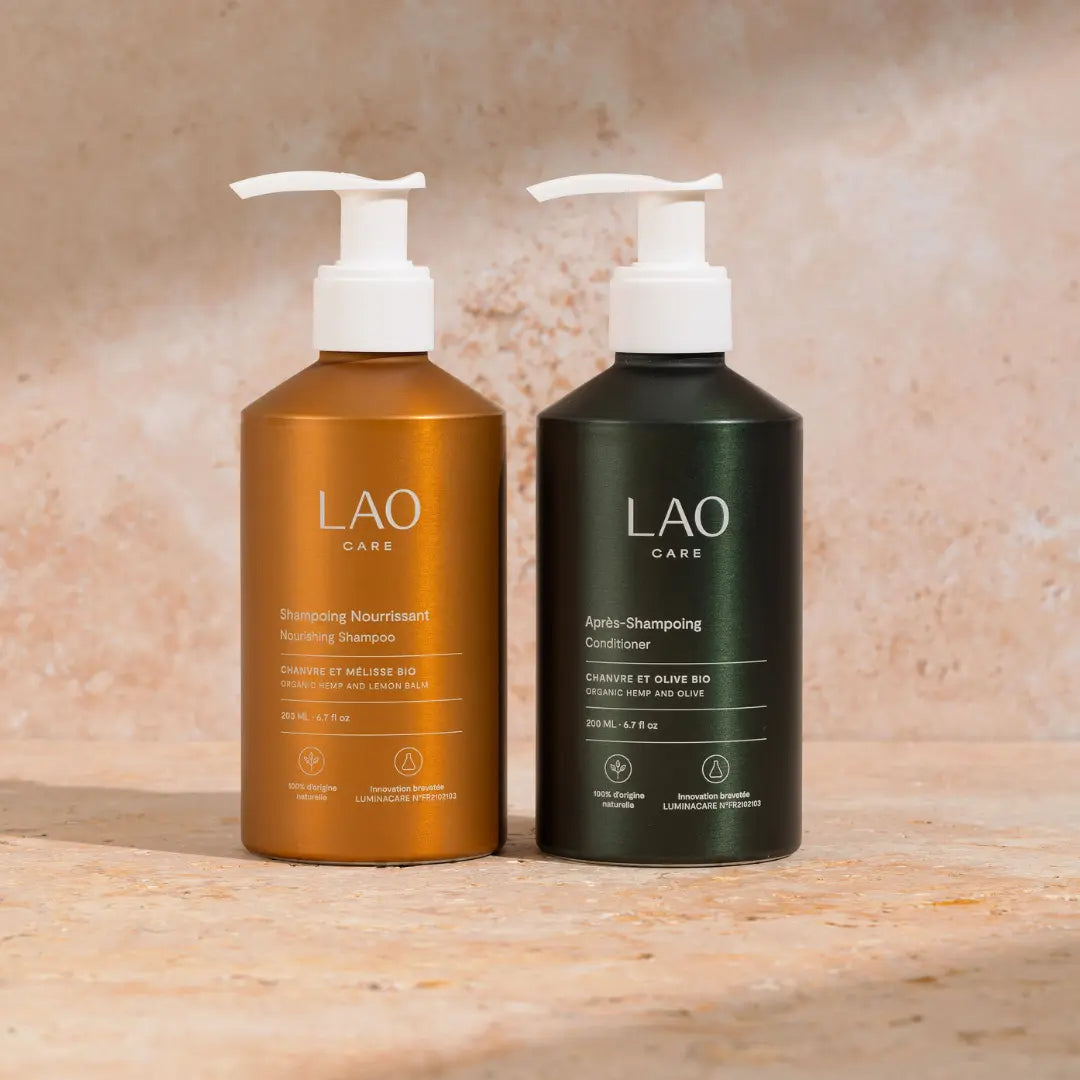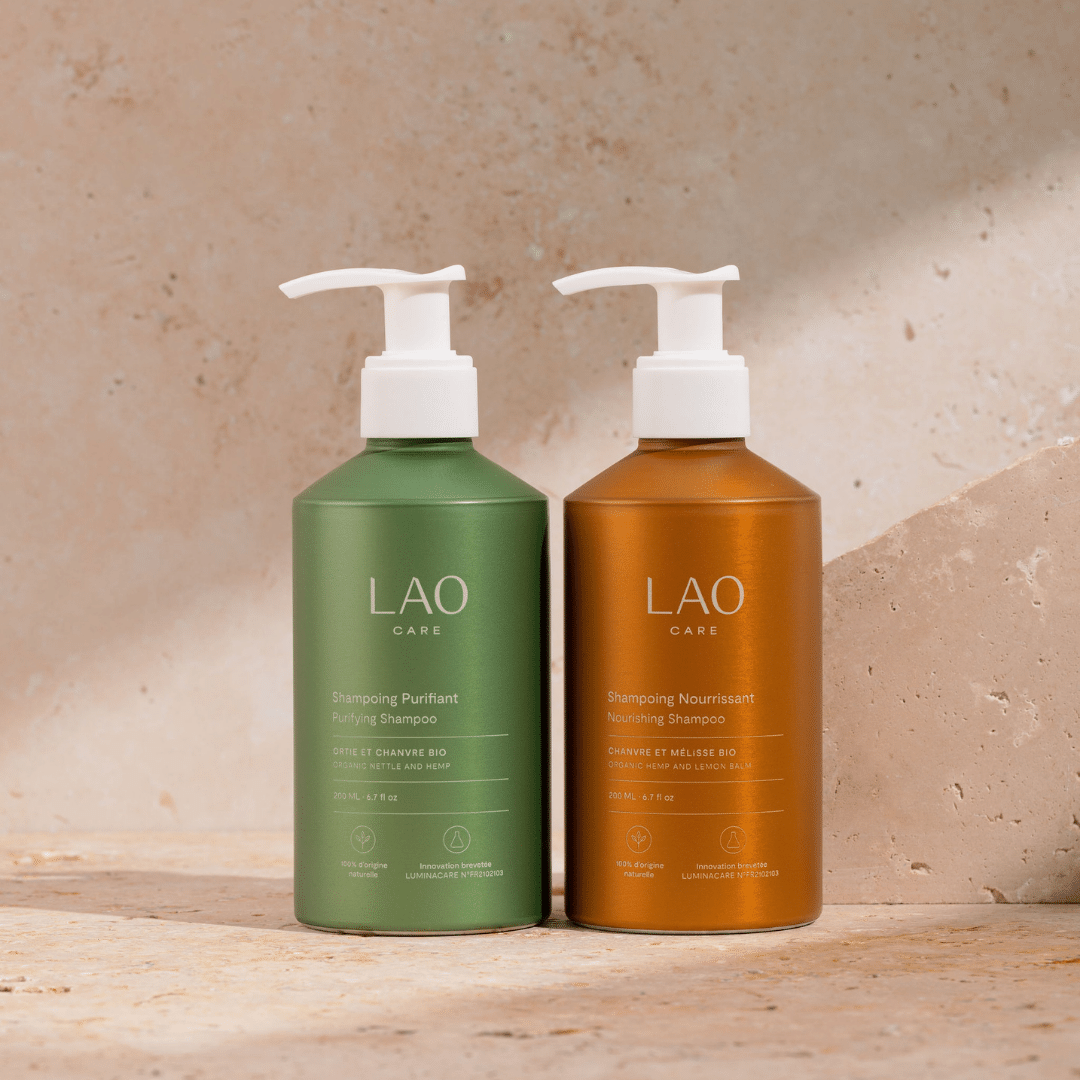Often subjected to harsh tests by various transformation processes (temporary or permanent), your hair, and more particularly its length, has a hard life ... and sometimes, it shows! No wonder we often complain about having dry, coarse, damaged hair ...
To partially remedy these very common problems, it is important to distinguish between dry hair and malnourished hair . Dry hair needs water, while malnourished hair needs nutrition.
Often confused, nutrition and hydration are two different answers to two different hair problems . In this article, LAO explains what differentiates them and how to understand your hair's needs to take care of it correctly and naturally .
What is damaged hair?
Following repeated use of heating appliances, chemical coloring or bleaching or perms, the hair becomes weakened and loses its vitality. This results in dull, unhealthy, dry or malnourished hair .
The best way to avoid damaging your hair in the first place is obviously to stop the problem at the source (goodbye to perms, aggressive (de)coloring and heating appliances!). But for those who are not ready to put their hair straighteners in the closet, there are other daily actions to adopt!
When it comes to products, the first thing to change is the most used and most important for your hair: shampoo . A chemical shampoo made with sulfates (stripping agents), silicones or quaterniums (film-forming agents) will only accelerate the deterioration of your hair , whether it is dry or malnourished.
Choose a natural and gentle shampoo that will cleanse without damaging the layer of sebum that your scalp and hair need to be healthy. Sebum should not be your enemy : it forms a necessary protective barrier (on the skin as well as on the scalp and hair ).
Hydration: for dry hair
Repeated use of heating appliances such as a straightener, curling iron or hair dryer will damage the structure of your hair and dry it out . These appliances will alter the cuticle of the hair shaft, which will cause its scales to open. Once opened, the keratin will no longer be protected and the hair will be less soft, less shiny, and will retain water less well .
This is why the main problem with dry hair is its particularly high porosity . Imagine the scales of your hair open like the spikes of a hedgehog: even if water penetrates, it immediately comes out because the scales no longer close and no longer retain water.
So, your entire hair routine needs to be changed before using water-based treatments:
- Limit or even stop the use of heating devices (apply a protective treatment beforehand if necessary)
- Sleep on a silk pillowcase to limit friction and damage to the hair
- Brush your hair gently, from the ends to the roots
Once you've adopted your new routine, it's necessary to moisturize your hair . This can come from the inside out by drinking more (this type of hydration won't work miracles on the lengths, however)!
For external care, we recommend masks with aloe vera (very rich in water), for example.
At first, to help your hair repair itself and close its scales, you can do an acid rinse after your shower, with cider vinegar for example as explained in this article. The acidity of vinegar is close to that of the pH of your hair shaft (pH = 4-5) so it will help it seal in all the care you have given it previously.
How do I know if my hair is dry?
To know if you have dry hair, you can base it on the appearance of dry hair : its high porosity. It is very easy to know the porosity of your hair, you just need to place one of your hairs in a transparent jar of water like below:
 If you find your hair at the bottom of the jar, then your hair is lacking moisture!
If you find your hair at the bottom of the jar, then your hair is lacking moisture!
Nutrition: for malnourished hair
Hair lacking nutrition is fragile, brittle hair with split ends. Chemical transformations of the hair such as coloring, bleaching, perms have reduced the amount of sebum in the scalp . Sebum being the best natural nutrient for your hair , in its absence, it is weakened and breaks.
Thick, curly hair often has this problem, as it is inherently difficult for sebum to distribute itself to the lengths. Combined with poor treatment, the hair becomes extremely malnourished .
The first step to remedy this problem is to space out shampoos (natural as mentioned earlier), the objective is to let the hair rebuild itself with the dose of sebum it needs . You will also have to stop chemical transformations. (If you want to continue coloring, think about plant-based coloring which is less irritating and stripping for your hair!)
Then you can make richer masks with butters or vegetable oils . We recommend olive oil, hemp oil, mirabelle plum oil, etc. and oat butter. Easily found and made in France, they are easy to add to your hair routine to nourish your hair .
Once a week, you can do an oil bath , but be careful, this treatment is misnamed, it is not a real bath but only a few drops spread over your lengths a few hours before your natural shampoo .
How do I know if my hair is malnourished?
To know if your hair is lacking nutrition, we will base ourselves on one of the aspects that characterizes undernourished hair: split ends . To do this, you can make two braids on either side of your head. You will see small hairs coming out of this braid. If you see that they split at the end into 2 or 3 branches, these are split ends. To remedy this, there is nothing better than cutting off the few damaged centimeters and taking care of your lengths.







Leave a comment